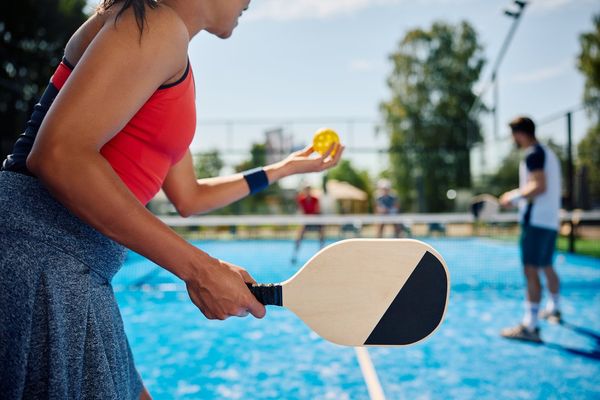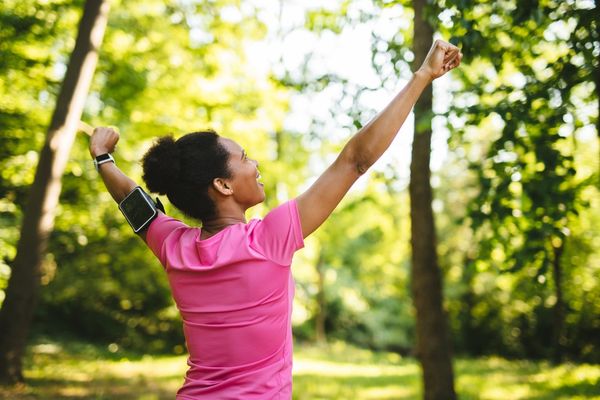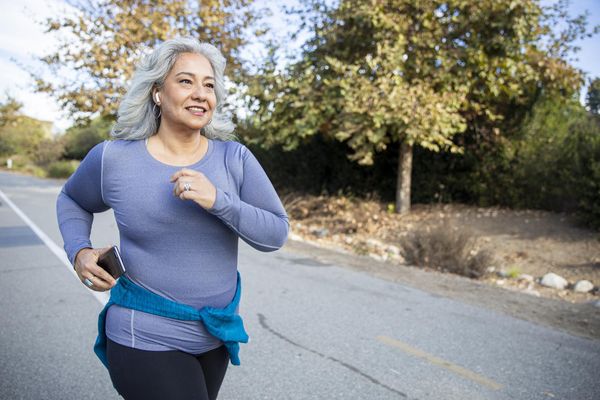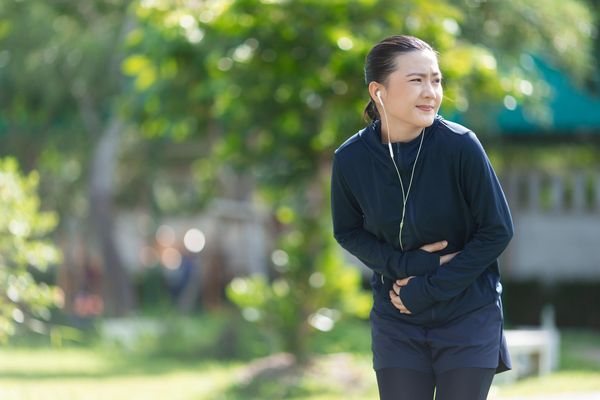Feel like you're stuck on the same old treadmill? You may be, if your regular exercise routine has become dull, dull, dull lately. And that boredom can undermine your best intentions. When physical activity becomes ho-hum, it's easy to find excuses for not doing it.
To cure the blahs, mix up your routine. Summer is a great time to add new physical activities, outdoors or inside, to boost your interest and keep your exercise engine going. You might choose to lap swim at the local pool as part of your weekly routine, or start each morning of your vacation with a tandem bike ride. Even a power walk through an outlet mall can provide a different twist on your usual walking circuit.
If you've been exercising alone for months, the American Council on Exercise suggests you take a class ( tennis, step aerobics) or join a club (cycling, ballroom dancing).
Changing activity not only helps some people enjoy exercise more, it may encourage them to keep exercising while others still doing the same-old-same-old drop out. So, stop yawning, and start…kick-boxing?
The value of variety
Mixing up your routine does more than just beat boredom. "There are some physiological benefits as well as psychological benefits of having variety in your exercise program," says Barbara Bushman, Ph.D., FACSM, associate professor, Department of Health, Physical Education, and Recreation, and associate dean of the Graduate College, Southwest Missouri State University.
When you do the same type of exercise exclusively, your body builds certain specific strengths. By switching your activity mode, you broaden your physical abilities.
Doing a different activity "stresses the body in a new and novel way," Bushman says. That's why, after trying a new physical movement, you sometimes feel sore in places where you had forgotten you had muscles.
"Stress on the body is a good thing," says Bushman. "We don't want it to be an excessive overload, but…we need to push it beyond what it normally does in order for it to improve."
Exercise variety may help reduce dementia risk as well. A 2005 study published by researchers at The Johns Hopkins Bloomberg School of Public Health and the University of Pittsburgh found that dementia, including Alzheimer's disease, occurred less frequently in people aged 65 or older who participated in more physical activities, from gardening to jogging to golfing. (Of course, if you're planning on becoming much more physically active than you are now, you'll want to check with your health care professional first.
Making a switch
Want to try something different? Bushman, co-author of an American College of Sports Medicine book, Action Plan for Menopause (Human Kinetics, 2005), has this advice:
- Start out easy and slow.
- Keep your intensity lower and the time shorter for your new physical endeavor than for your regular one.
- Give yourself time to learn the specific skills or techniques needed for proficiency.
- Consider your new interest an addition to your regular routine until you progress to your usual level of exertion. Then think about fitting it into your overall fitness program.
Take a hike (or bike)
If you usually walk for exercise, taking up hiking is just, well, a step beyond. Hiking over natural terrain burns more calories than brisk walking (193 to 129 calories per 30 minutes for a 135-lb. woman) and it's lots more fun. What's more, when you go hiking on a scenic trail, you'll usually spend more time at it than when you walk around a boring track.
To begin, the American Hiking Society suggests you start with short distances and then gradually advance to two- or three-mile hikes. When you're comfortable with those lengths, try a longer weekend day hike that might include more challenging trails. For day hikes, be sure to take water, healthy snacks, a map and a compass.
It's important to pick a trail that's suitable for your hiking level. You'll find information on hiking trails, gear and clubs at https://www.AmericanHiking.org.
Bike riding can be an all-weather change to your exercise routine. When it's dry out, cycle in a local park, along specially marked bike lanes, or with a cycling club. In rain or cold, use a stationary bike indoors. You might enjoy joining a stationary bike or spinning class, in which a leader takes riders through a routine.
Cycling is a non-weight-bearing exercise, so it's easier on your joints. To avoid other injuries, make sure you're on a bike that's sized and fitted correctly for you. It's best to get help with this from a knowledgeable person (bike shop staff or cycling club members can help). There should be a little bend in your knee when the pedal is in the down position. Always wear a helmet when biking.
Exercise in—and on—the water
Summer's a great time to mix up your routine by adding water activities.
Take the plunge and you may discover some muscle groups you've been neglecting. " Swimming is a different kind of exercise than walking. It primarily works the upper extremities, whereas walking is lower extremities," says Walter R. Thompson, Ph.D., FACSM, professor, Department of Kinesiology and Health, Georgia State University. If you like keeping track of your distance, swim laps in a pool. Swimming just for fun—in a pool, lake or ocean—also adds exercise benefits.
Water provides natural resistance, but more gently, since impact is lessened by buoyancy, says Bushman. That's part of the reason that water aerobics classes have become so popular, especially with women who may be overweight. She also suggests deep water run training, in which you wear a buoyancy vest or belt and use running motions while the buoyancy device holds you up in deep water. "It's non-impact, because you're not touching the bottom of the pool," Bushman says.
Canoeing, kayaking and rowing give you a work-out on top of the water. Bushman enjoys open water kayaking, which is done on a lake (so there's no river current to help you along). It builds core muscle strength in your arms, torso and legs.
Many river locations offer canoe, kayak and even rowboat rentals in hourly increments, so you can try one for as lengthy (or brief) a time as seems comfortable to you. "It's good exercise," Thompson says. "If you want to introduce variety, as a single-day substitute, instead of going for a walk, go for a paddle."
What variety can do for you
| Activity | Calories used per 30 mins.* | Benefits |
| Biking (12-14 mph) | 258 | strengthens lower body; non-impact**; aerobic |
| Canoeing | 225 | strengthens upper body; non-impact |
| Dancing | 145 | strengthens lower body; aerobic |
| Gardening | 161 | strengthens whole body |
| Hiking | 193 | strengthens lower body; aerobic |
| Jogging | 225 | strengthens lower body; aerobic |
| Kayaking | 161 | strengthens whole body; non-impact |
| Swimming (laps) | 258 | strengthens upper body; non-impact; aerobic |
| Tennis | 225 | strengthens whole body |
| Walking (4 mph) | 129 | strengthens lower body; aerobic |
*Calorie expenditure is for a 135-lb. woman
**A non-impact activity is helpful if you have joint or bone problems. Most women need some regular impact exercise to build bone strength and help prevent osteoporosis.
Source for calorie expenditure: Dept. of Kinesiology and Health, Georgia State Univ.







